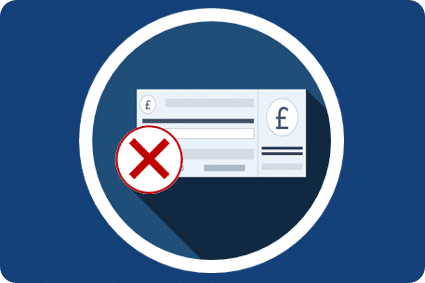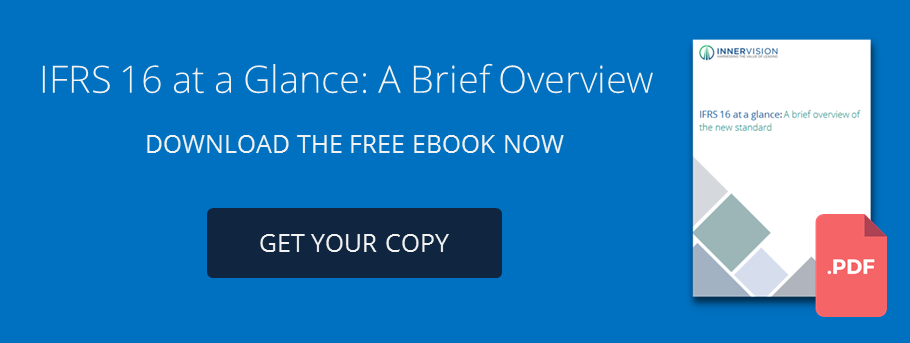IFRS 16 gets personal – Lease Accounting Standard Impact for Incentive Compensation Payments & Earn-outs
Updated 11th March 2025 | 6 min read Published 20th October 2016

 The new lease accounting standards will undoubtedly have an impact at a company level, but with the shift in key financial metrics likely to affect reporting KPI’s and associated incentive payouts, this time, it’s also personal.
The new lease accounting standards will undoubtedly have an impact at a company level, but with the shift in key financial metrics likely to affect reporting KPI’s and associated incentive payouts, this time, it’s also personal.
Many businesses employ salary based performance incentives revolving around financial metrics and KPIs. IFRS 16 and FASB Topic 842 change the way that leases are treated on financial statements, which will have a direct impact on these metrics, in many cases shifting them towards less desirable figures. In some cases, this will challenge a company’s ability to hit these figures as, almost overnight, trillions in lease commitments are added to balance sheets globally. An increase in reported debt, liabilities, EBIT, EBITDA and interest is going to impact the company’s recorded financial position.
See more: The financial statement impacts of IFRS 16
Unless consideration is made with regard to the transition, many will not achieve their targets through no fault of their own.
Currently, under IAS 17 and Topic 840 (formerly known as FAS 13), operating leases are accounted for “off-balance sheet”. Entities are not required to recognise arising liability or assets from these lease agreements within the bulk of the balance sheet. IFRS 16 and FASB Topic 842 were designed to negate this by bringing virtually all leases out of the footnotes and onto the balance sheet.
The removal of this “off-balance sheet” accounting treatment for operating leases will bring an estimated $2.8 trillion worth off lease commitments onto balance sheets globally, the result of which will have ramifications for key financial reporting metrics.
See more: Lease accounting guide and IFRS 16 summary
See more: Lease accounting changes - IFRS 16 vs. FASB
Naturally, if this will impact the KPI’s that are used to determine additional compensation payments and bonuses, something needs to be done to account for this shift. Communication between colleagues and stakeholders is vital to ensure that the transition is not only smooth, but that everyone is on the same page and aware of how IFRS 16 changes impact their company's financial figures – especially in the first year of implementation.
Here’s how to avoid it impacting you:
Start talks now
It’s hardly uncommon knowledge, but making sure discussions have already begun and that this issue is on the agenda is the best way to minimise the impact. After all, the early bird does catch the worm.
Awareness is key; ensuring those who need to be alerted are and those that require assurance are receiving it. Lease accounting implementation is a long enough process with various priorities and success metrics; making sure compensation payments are included in that will help reduce the concerns.
These lease commitments are not new and the liabilities already exist – they will now be more visible in financial statements. This means that companies have access to these additional figures and, with the right tools, will be able to simulate how their current leasing activities will be impacted by the introduction of the new lease accounting standards. They should have everything they need to begin renegotiations of covenants and shareholder agreements, both of which will benefit from early discussions.
Review the impact
With practically all leases coming onto balance sheet, an increase in metrics is a given for a company with a lot of operating leases within their lease portfolio. It is important to know exactly how these key figures will be affected and this can be gained through an initial new lease accounting impact assessment.
Running a “before and after” comparison report enables you to visualise the difference in debt, liabilities, EBIT etc. using the existing IAS 17 lease accounting standard and the new IFRS 16. This data gives an accurate and real-time account of the impact, allowing your organisation to review exact figures when assessing the financial impact on their statements.
Once again, the earlier the impact assessment is conducted, the sooner the business can analyse and review agreements, stakeholder relationships and internal measurement KPI’s – such as incentive payouts – and with enough time to act upon any concerns that arise. This process will be required to assure investors and stakeholders of the change in financial statement disclosures so there is no additional work required.
See more: Lease accounting impact and IFRS 16 reports
Begin collecting leases now
Before a comparative assessment can be completed, your business needs to know how many leases you have, how many will be impacted and how many qualify for exemptions and transition reliefs. This means you need a central database of your lease agreements from across the company and a logical way to store and quickly assess them.
Most businesses are looking towards lease accounting software as spreadsheet accounting has been consistently deemed unsuitable for implementing the new lease accounting standards. With specialised and effective lease accounting software, your organisation can keep in control of the transition and efficiently act upon the required responses.
See more: Lease accounting data and IFRS 16 compliance
Lack of preparation
As it currently stands, businesses are in the early stages of implementation. There is still ample time to prepare, but with IFRS 15 and IFRS 9 implementation occurring at the same time as IFRS 16 preparation, accountants understandably have been posed with a complex challenge.
A mere 7% of companies have actually begun the data gathering process and only 11% have allocated a budget for IFRS 16 implementation. There is a concerning risk that companies are neglecting some key initial decisions, the results of which will determine the entire success of their implementation and compliance.
With the result of the new standard set to impact various operational and financial, internal and external structures, organisations need to ensure they remain in control of the implementation process and that their strategy is cost-effective, efficient and executed in a timely manner in order to balance the numerous collateral impacts and simultaneous project priorities.
Whilst the official implementation deadline for IFRS 16 may still seem plenty of time away, one important factor to consider is the scope of the impact the new standard will have. By bringing operating leases onto balance sheet, the repercussion will be felt across numerous departments. This includes the obvious areas such as accounting, treasury and finance, as well as less overt implications for IT (if new software is needed), legal (if new contracts need overseeing) and even HR (with potential compensation payment discrepancies).
See more: First stages of IFRS 16 implementation and lease accounting preparation
The fact of the matter is that, with IFRS 16 discussions becoming more and more widespread and prioritised, organisations need to recognise what the impact on their company will be. They need to start their preparations and begin collecting their lease documents and data. From there, they can begin to strategise a solution and calm any fears that may arise from how implementing IFRS 16 will impact the company.
The easiest way to clearly see the impact of IFRS 16 on your leasing and financial statements is to utilise lease accounting software. Innervision’s lease management and accounting software, LOIS, has a unique feature that allows lessees to store all their leases in one central inventory and run a direct comparative lease accounting report.
LOIS compares your financial metrics under the existing IAS 17 and the new IFRS 16, providing you with a clear breakdown of how various figures will shift under the new standard, information from which you can leverage a cost-effective and efficient transition workflow.
For more information on the impact of IFRS 16 follow this link.

